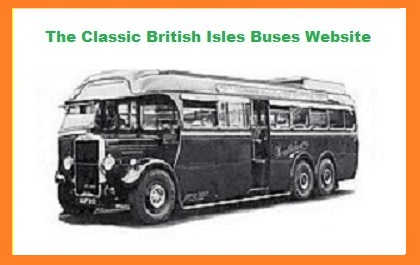

The Classic British Isles Buses Website
Transport in India in 2014: page 1 - trams (by Dick Gilbert)
Last updated 28 August 2024
Email Events diary Past events list Classified adverts Classic U.K. Buses Classic Irish Buses Classic Manx Buses

Here is a typical Calcutta tram as seen by me in 2014. The number in Bengali numerals on the right rear is 241, which means it's a class JM6 built in 1982.
As some of you will know, I spent a short holiday in India in October 2006. What a fantastic country! At that time we visited four states - Delhi (DL registrations), Haryana (HR), Uttar Pradesh (UP) and Rajasthan (RJ). On my return I created three pages illustrating the transport delights that I saw.
Then, in 2014, I went back again, but this time to West Bengal (WB registrations), starting from Kolkata (Calcutta) and travelling about 250 miles north up into the real rural India, close to the Bangladeshi border and following the Hooghly River, a branch of the mighty Ganges. It was a fabulous trip with lots of new things to see, and I've divided my pictures into five sections, as per the above list:
Trams? Yes - Calcutta boasts the only operational tram system in India. It's a standard-gauge system, opened as a private company in 1902 and taken over by the government in 1967. There are currently in excess of 200 trams in the fleet, each operating in two-car units (with three bogies, the middle one linking the two cars), each car seating about 30 and with a maximum capacity of 100 passengers.
I was delighted to take a ride on one of the trams and visit a depot. So, to begin our visit to urban and rural Bengal, I hope you enjoy this look at the tram fleet.
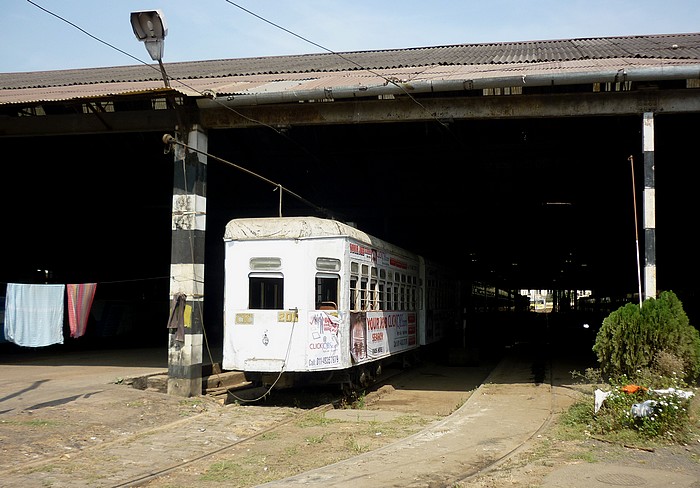
My selection of pictures is in fleet number order, although this bears no resemblance to the age of the tram. First is a picture of tram 205 resting at Belgachia depot in the north of Calcutta. It is a class JM6 paye built in 1965 from equipment acquired from the Bombay system.

Here's tram 241 again (as seen at the top of the page). On the left-hand side is the inscription CTC which stands for Calcutta (with a C) Tramways Company.
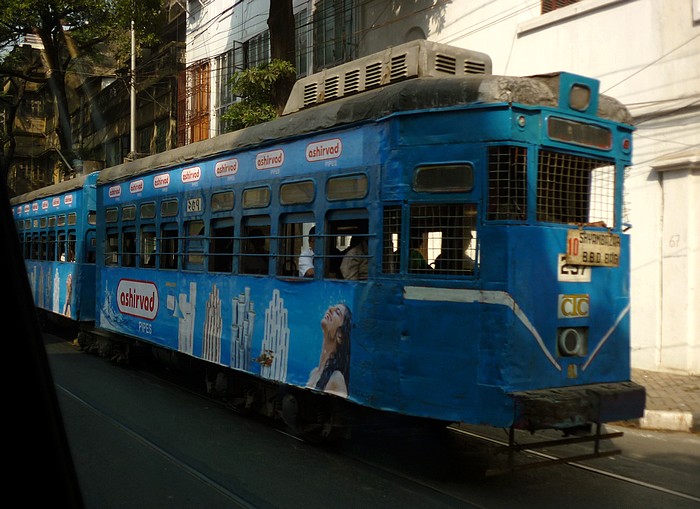
Next is another class JM6, no. 257 from 1982, looking very battered with an allover advert for Ashirvad, a Bangalore-based company that makes PVC pipes for submersible pumps. These trams were known as new cars.

Yet another JM6 is no. 280 built by Burn and Co in 1983. It's being overtaken, as are all Calcutta trams. In fact it has been said that an old man with a stick can travel faster than a Calcutta tram.

Tram 545 (a JM6 class L) looks much more modern but that's just because it has been rebuilt with a replacement fibreglass body. It was originally built in 1950. This time the allover advert is for Wai Wai noodles.

Tram 630 looks very modern too. It's a JM6 Class N rebuilt by Burn and Co in 1983 from bits of class J, K and L.

War-weary tram no. 659 is another JM6 class N, the last of the batch.
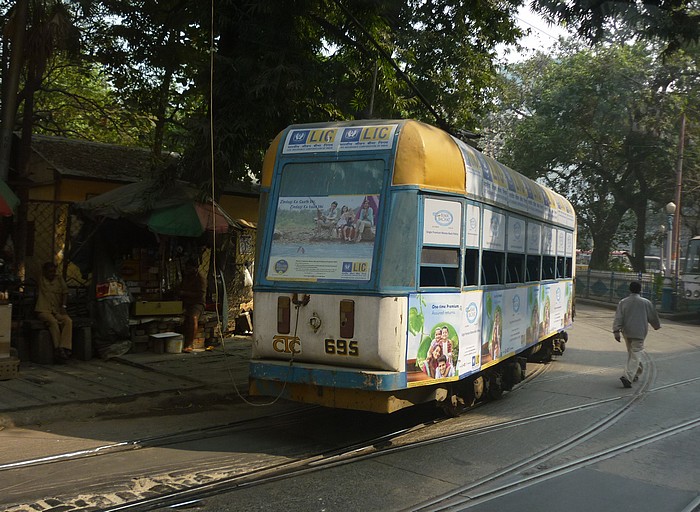
Tram 695 is a JM6 built by Jessop and Co in 1988.
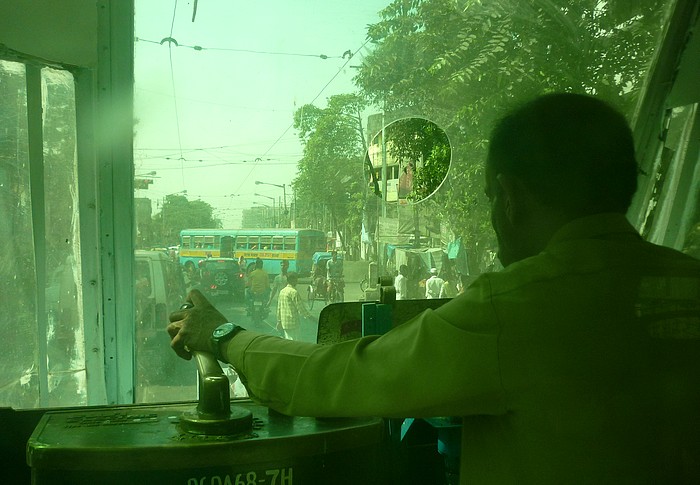
And here is 695 again, from the inside. The driver notches up as we slowly grind our way through the Calcutta traffic. His left heel is bouncing up and down on a floor button that constantly rings a warning bell to clear the way.

This is the passenger cabin of 695. Plenty of light (there would be more if it had a wash) and big ceiling fans. You can get 100 people in here? Apparently you can.

Our tram 695 meets 718 coming the other way. 718 is another JM6 class N built by Burn and Co in 1988.

Finally here's class N no. 696, also from 1988, seen from a taxi. The livery appears to be paint-can graffiti.
Email Events diary Past events list Classified adverts Classic U.K. Buses Classic Irish Buses Classic Manx Buses